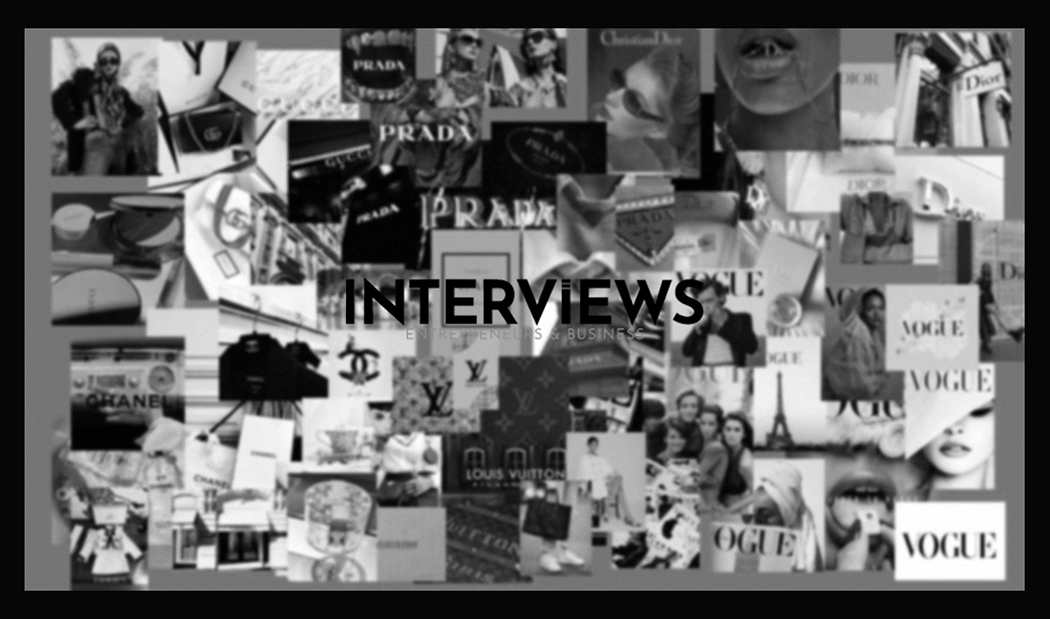Dive Headfirst into Fashion: Your No-Nonsense Guide to Launching a Clothing Brand
So, you want to be a fashion mogul? Dreaming of labels with your name on them? Here’s the deal. Starting a clothing brand means more than just sketches and dreams. It’s all about creativity, grit, and business skill. This is a challenge, not just a runway show.
This isn’t your typical fashion blog. We’re skipping the fluff and getting to the facts. Consider this your battle plan for launching a clothing line. From the crazy idea to real sales, it will be a wild ride. Buckle up; it’s all about the style.
The Genesis: Initial Steps to Stitching Your Brand Together
Before you sketch designs, let’s set the stage. This is your canvas preparation. It’s messy but absolutely necessary.
Market Research: Are You Barking Up the Right Fashion Tree?
“Market research” sounds exciting, right? Not really. But it is critical. Before you invest time and money, find out if anyone wants what you’re offering. Research the market. Jumping in blind can lead to chaos.
Don’t just skim trends and assume you’re good to go. Real market research means digging deeper. Who are your competitors? What are they doing right? Where are their mistakes? Identify any gaps in the market. Tools like competitor analysis sheets will aid you immensely. Get acquainted with data; it’s better than unsold clothes.
Define Your Target Audience: Who Are You Dressing, Really?
“Define your target market.” We all know this. But many treat it as just a vague group of “people who like clothes.” No, be specific. Are you designing for Gen Z, millennials, or seniors? Understanding your ideal customer is key.
It’s not enough to say “women aged 25-35.” Dig deeper. What are their hobbies? What do they value? Where do they shop? Create buyer personas with names and stories. The better you know your customer, the more suitable your designs and marketing will be.
Develop a Strong Brand Identity: More Than Just a Logo
“Develop a strong brand identity.” This part can make or break you. Your brand identity reflects your clothing line’s essence. It goes beyond a catchy name or logo. It’s how people feel about your brand.
Think about brands you like. What makes them unique? Your identity must merge your values, mission, and story. Why are you different? Your visual identity is just a start. Your brand voice, customer service, and packaging matter too. Nail this, and you’re on your way to a following.
Design Your Clothing Line: From Brainwave to Beautiful Garment
“Design your clothing line.” Time for the fun part! But you need a plan. Will your pieces be timeless or trend-driven? Your collection needs cohesion. Your designs should speak to your brand and audience.
Sketch your ideas into actionable designs. Don’t just mix random items. Plan collections based on seasonality, color, and style. Consider silhouettes and materials. Are your designs for minimal wardrobes or statement pieces? Stay authentic while considering trends. Create tech packs that detail all aspects of production.
Source Fabrics and Production: Where the Magic Happens (or Doesn’t)
“Source fabrics and production.” Here is where ideas become garments. This stage can be scary. Finding reliable suppliers is tough – often a lot of trial and error before finding the right one.
Research domestic and international suppliers. Examine factors like quality, minimum orders, and ethics. Choose your production method—cut-and-sew or print-on-demand. Cut-and-sew requires investment but suits larger batches. Print-on-demand is low-risk for startups. Ask for samples, negotiate terms, and ensure clarity. Choose your partners wisely.
Set Up an Online Store: Your Digital Boutique
“Set up an online store.” In this era, an online presence is essential. Your store acts as a virtual storefront open around the clock. Pick an e-commerce platform that fits your needs—Shopify or BigCommerce are excellent choices.
Make your online store visually appealing with quality product photos. Professional shots will serve as your salesforce. Show your clothing in real-world settings to drive conversions. Set pricing that balances expenses and profits. Lastly, develop an inventory management system that keeps track of stock smoothly.
Implement a Marketing Strategy: Get the Word Out (Without Screaming)
“Implement a marketing strategy.” Creating your line is just one piece. Getting people to notice your brand is another challenge. You need an effective marketing plan to reach your target audience.
Utilize social media platforms where your audience is active. Content marketing, including blogs and videos, increases brand authority. Email campaigns nurture leads and boost sales. Influencer marketing can also widen your reach through trusted voices.
Business Blueprint: Charting Your Course to Clothing Empire
Okay, creative whirlwind over. It’s time for the crucial business side.
building the strong structure of your clothing brand house. Without a solid business plan, your fashion dreams are merely castles in the sand.
Crafting Your Compass: The Business Plan
“Key steps include […] creating a business plan.” Yes, this document is essential. Your business plan isn’t only for impressing banks or investors. It’s your roadmap and your sanity check. Outline your goals, financial projections, and marketing strategies.
A detailed business plan must include:
- Executive Summary: It’s a snapshot of the entire plan – think elevator pitch on steroids.
- Company Description: Information about your brand, mission, and vision.
- Market Analysis: In-depth research on your target market, industry trends, and competition.
- Competitive Analysis: Analyze key competitors – their strengths, weaknesses, and your differentiation.
- Marketing and Sales Strategy: How you will reach and acquire customers (more later).
- Operations Plan: Management of production, fulfillment, and daily operations.
- Management Team: Who runs the show? Highlight your team’s expertise and experience.
- Financial Projections: Startup costs, revenue forecasts, profit margins, and cash flow projections.
- Funding Request (if needed): If in need of investment, detail your requirements and use.
Treat your business plan as a living document. Revisit it as your business evolves. This task is not a one-off. It’s an ongoing process of planning, adapting, and strategizing.
Money Matters: Financial Projections
“Financial projections.” The dreaded F-word for many. Ignoring numbers is a path to disaster. Understand the financial aspect of your clothing brand, from startup costs to revenue.
Your projections should include:
- Startup Costs: One-time expenses getting your business up – design costs, sampling, website development, inventory, legal fees, etc.
- Operating Expenses: Ongoing costs to run your business – fabric expenses, manufacturing, marketing, platform fees, shipping, salaries.
- Revenue Forecasts: Sales revenue based on pricing strategy and marketing efforts. Be realistic.
- Profit Margins: Percentage left after costs. Understand your desired profit margins and adjust pricing.
- Cash Flow Projections: Monitoring cash movement. Crucial for managing daily finances.
Tools like templates and software help reduce pain. Consulting a financial advisor is wise if you’re unfamiliar with planning. Knowing numbers empowers informed decisions and avoids pitfalls.
Marketing Strategies: Building Relationships
“Marketing strategies.” Let’s explore this. Your strategy isn’t merely about ads; it weaves in relationships, community, and brand storytelling. A strong marketing strategy in your business plan is vital to gaining attention.
Effective strategies for clothing brands include:
- Social Media Marketing: Engage on platforms where your audience hangs out. Platforms like Instagram and Pinterest are visual.
- Influencer Marketing: Collaborate with influencers to promote your brand to their followers.
- Email Marketing: Build an email list and send newsletters, promotions, and product announcements.
- Content Marketing: Create valuable content – blog posts, style guides, videos – to attract your audience.
- Search Engine Optimization (SEO): Optimize your website and content for higher search engine results.
- Paid Advertising: Use paid ads on social media or search engines to reach a larger audience. Start targeted campaigns.
- Public Relations (PR): Build ties with media outlets to feature your brand.
- Collaborations and Partnerships: Partner with other brands or organizations for cross-promotion.
Your marketing mix depends on budget, audience, and brand identity. Track efforts and analyze what works. Marketing requires testing, measuring, and optimizing.
Legal Foundation: Business Structure
“Choose your business structure (sole proprietorship, LLC, etc.).” Legal matters might seem dull. In reality, your structure affects liability, taxes, and administration. Choose wisely to avoid headaches later.
Common structures include:
- Sole Proprietorship: Simple to set up but no legal separation from business. You’re personally liable for debts.
- Partnership: Shared ownership and profits/losses among two or more people. Similar liability issues.
- Limited Liability Company (LLC): Provides liability protection, tax flexibility, and added credibility. A good choice as your brand grows.
- Corporation (S-Corp, C-Corp): More complexity but strong liability protection for larger businesses. Involves stricter regulations.
Many new clothing brands opt for an LLC. This structure protects personal assets if faced with lawsuits or debts. It enhances professionalism and credibility in customer eyes. Most banks require LLCs for business bank accounts, simplifying finances. Starting small as a sole proprietorship minimizes risk, but transitioning to an LLC is advisable as growth occurs. Always seek legal advice for the best structure based on specific circumstances. Consult a lawyer to understand formation requirements and LLC benefits in your state.
Design Deep Dive: From Idea to Tech Pack
Back to creativity! Even design requires process. Let’s explore how to bring clothing visions to life.
Sketching: Inspiration Meets Ink
“Sketch and develop your clothing designs.” This step shapes your vision. It begins with inspiration – mood boards, trend research, and art. Then, translate ideas into sketches.
Create detailed clothing sketches. Experiment with silhouettes, fabrics, and features. Use design software for refined sketches. Don’t shy from iteration. Designs rarely come perfect on the first attempt. Develop multiple variations, mixing elements till you find your favorite. Recognize trends but prioritize brand identity; trends matter but brand identity is essential. Stay authentic to your brand – capture its aesthetic, values, and audience. Avoid chasing fleeting trends; selectively incorporate them if they align with your identity. Consistency builds a loyal brand. Remember to build a brand, not just chase fads.
Trend Awareness vs. Authenticity: The Balance
“Consider current trends.” Yes, you must know them. No, don’t follow blindly. The goal is balance – being relevant without losing identity. It’s a delicate act.
Trends are fickle. What’s hot today may vanish tomorrow. Forecast reports keep you updated. Don’t let trends dominate design direction. Use them as inspiration and subtle references. Adapt them to fit your brand’s aesthetic. If minimalist, a neon trend may feel jarring. Instead, opt for classic styles updated with modern fabrics or subtle details. Staying true to brand identity is crucial for success. It builds recognition and loyalty. Avoid diluting by chasing non-resonant trends.
Tech Packs: Your Guide
Blueprint for Production Perfection
“Create technical drawings (tech packs) for production.” Tech packs are vital in clothing manufacturing. These documents communicate designs to manufacturers. This helps ensure production accuracy. Create technical drawings to facilitate communication with manufacturers.
A tech pack serves as a blueprint for garments. It includes:
- Detailed sketches: Front, back, and side views with measurements.
- Measurements: Graded measurements for various sizes.
- Fabric specifications: Information on fabric, trims, and notions.
- Construction details: Types of seams, stitch details, methods.
- Colorways and patterns: Pantone colors and print files.
- Labeling and packaging: Care labels and hang tags.
- Bill of materials (BOM): A list of all materials with quantities.
Tech packs save time and money. They minimize errors and ensure quality. Clear tech packs improve communication with your manufacturer. If you’re not skilled in design, consider hiring a freelance tech pack creator. It can enhance your production process.
Sourcing and Production: From Fabric to Finished Product
Let’s explore sourcing and production. This is where raw materials change into finished garments. Your designs will come to life here.
Finding Your Fabric Soulmates: Supplier Scouting
“Find fabric suppliers and manufacturers.” Searching for the right fabric suppliers resembles finding quality ingredients. Good fabrics are key for quality clothing. Finding fabric suppliers is vital for quality and cost-effectiveness.
Ways to find fabric suppliers:
- Online Directories: Platforms like Alibaba and Maker’s Row list fabric suppliers globally.
- Market Expos: Attend events like Première Vision or local markets to meet suppliers.
- Fabric Mills: Consider direct sourcing from mills for larger quantities.
- Distributors and Agents: They provide a wide range of fabrics and ease the sourcing process.
- Local Markets: Explore markets in cities like New York for smaller quantities.
When you search for suppliers, evaluate fabric quality, sustainability, pricing, and lead times. Request fabric samples to check quality. Build strong relationships with suppliers for better supply chains.
Production Pathways: Cut-and-Sew vs. Print-on-Demand
“Decide on production methods (cut-and-sew, print-on-demand).” Choose a method based on your brand and budget. Cut-and-sew and print-on-demand have different pros and cons. Each reflects cost, quality, and control.
Production options include:
- Cut-and-Sew: Traditional method. Fabric is cut and sewn together. Works well for custom designs and larger quantities but needs more investment.
- Print-on-Demand (POD): Designs print on items when orders are placed. Great for startups with less risk but may have higher costs.
- Dropshipping: You don’t manage inventory; third-party suppliers ship directly to customers. Minimal risk, less control over quality.
- Domestic vs. Overseas: Domestic production supports local economies; overseas options may be cheaper but can lead to longer times.
Consider budget, quality, volume, and control when selecting a method. For new businesses, POD can be ideal for lower risk. As you grow, shifting to cut-and-sew allows better control and lower per-unit costs.
Negotiating Like a Pro: Pricing and Quality Control
“Negotiate pricing and quality standards.” Don’t hesitate to negotiate with suppliers. Aim for the best price without sacrificing quality. Negotiating pricing is critical for production success.
Negotiation strategies include:
- Do your research: Understand market prices and get quotes from multiple sources.
- Be clear about your budget: Set realistic target prices from the start.
- Negotiate MOQs: Reduce minimums if they exceed your needs when starting out.
- Discuss payment terms: Set favorable terms for payments, deposits, etc.
- Emphasize quality: Clearly articulate your quality standards.





